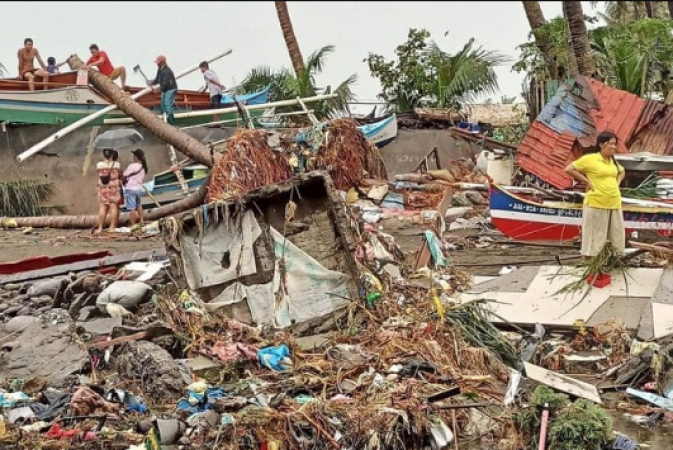
Manila: Following the deadly floods and landslides that struck the Philippines over the weekend, search and rescue teams raced on Wednesday to locate the dozens of people still missing.
One of the country's deadliest weather-related incidents this year has affected close to 400,000 people as rain-caused flash floods swept through 10 provinces as Filipinos celebrated Christmas.
Authorities in charge of disaster relief reported that the number of casualties reported so far has increased from 17 on Tuesday to 25, with the majority of deaths in the country's southern Northern Mindanao region being due to drowning from flash floods.
Also Read: "The cries of the children were unbearable," Rohingya refugees who were saved at sea recall
25 people have died as of right now, most of them from drowning. Diego Agustin Mariano, information officer at the Office of Civil Defense, told Arab News, "We also have nine injured and 26 missing."
The majority of the missing are fishermen from coastal communities in Catanduanes and Eastern Samar, according to the report. The Philippines Coast Guard is currently leading a search and rescue operation for them.
Also Read: Taliban's ban on women attending higher education in Afghanistan is drawing more criticism
At evacuation centres were more than 81,400 residents of the central southern provinces of Occidental Mindoro, Oriental Mindoro, Marinduque, Romblon, Palawan, Bukidnon, Camiguin, Misamis Occidental, Misamis Oriental, Lanao del Norte, and the Bangsamoro Autonomous Region in Muslim Mindanao.
As things got better, the others went back to their respective homes, according to Mariano.
The floods were not brought on by the tropical storms that frequently hit the Philippines, in contrast to other tragic weather-related incidents in the nation.
Christmas rains were brought on by a shear line that developed in the south of the nation, which is where warm and cold winds converge.
Also Read: El-Rufai wants to punish politicians who use religion as a political tool
The Philippines is consistently listed as one of the nations most vulnerable to and affected by climate change. As the world gets warmer, the nation of the archipelago has seen an increase in extremely destructive weather events over the past ten years.